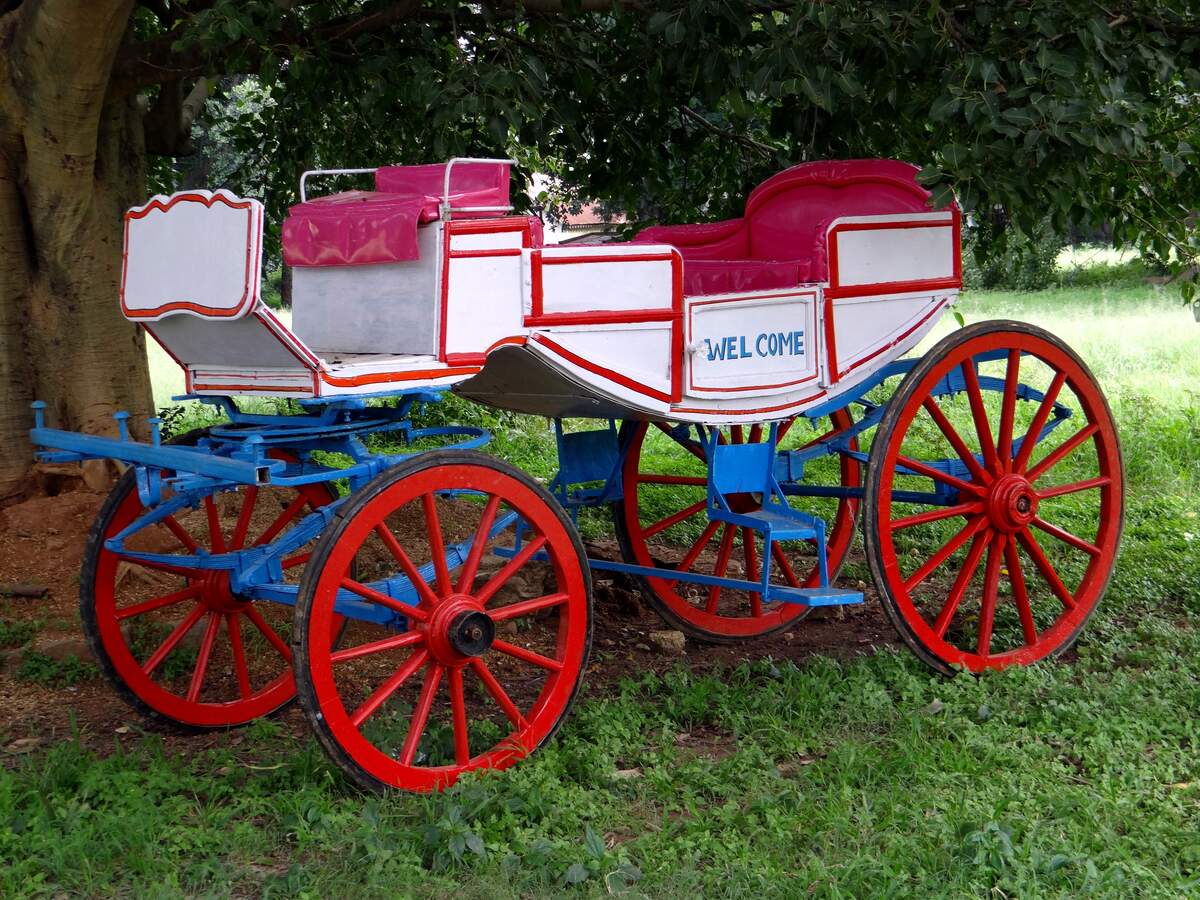

Horseless Carriage Day
Observed
annually on October 26th
Dates
Hashtags
Sources
http://www.famous-quotes-and-quotations.com/clifford_stoll.html
https://arthistoryunstuffed.com/how-the-automobile-became-the-car-part-one/
https://en.wikipedia.org/wiki/Horseless_carriage
https://historygarage.com/nicolas-joseph-cugnots-1769-steam-tractor/
https://rich1698.wordpress.com/2018/10/26/horseless-carriage-day/
https://www.anrdoezrs.net/links/100298379/type/dlg/https://www.newspapers.com/image/285238153/
https://www.anrdoezrs.net/links/100298379/type/dlg/https://www.newspapers.com/image/576826214/
https://www.wofox.com/content-calendar/horseless-carriage-day
"Horseless carriage" is a transitional term used with emerging technology, an example of where a new item doesn't have something the old item had, similar to how a wireless telephone doesn't have a cord. Prior to the advent of mechanically powered carriages, they had been pulled by animals, usually horses. The horseless carriages that replaced them became the forerunners of motor cars or automobiles. Even though the horse was gone, the carriage retained many other characteristics of the horse-drawn carriage.
Horseless Carriage Day has been observed at least since 1982, being held on October 26th. It takes place then because the diary entry for that date in 1769 in James Boswell's biography of English writer Samuel Johnson, The Life of Samuel Johnson, recounts how Johnson had been told on that day about a recently invented machine that drove without horses, which was instead propelled by turning a handle that activated a spring.
The machine that Johnson learned of might have been the one that was invented by Frenchman Nicolas-Joseph Cugnot in 1769, at the behest of General Gribeauval of the French Army, who asked him to build something that would carry cannons into battle. This, the world's first horseless vehicle—or vehicle moved without any other muscle, for that matter—was a dray, or fardier à vapeur, a type of delivery wagon that looked more like a tricycle than a car. Drays customarily were two-wheeled and pulled with a horse, but in this case, a wheel replaced the horse, and the machine was powered by steam. Cugnot's vehicle could drive for ten to fifteen minutes before having to rest to build up more steam.
Although a steam-powered vehicle patent was approved in the United States in 1789, steam became the power of choice for locomotives and ships, not automobiles. Some steam-powered horseless carriages continued to be made, however. Richard Trevithick demonstrated his in London in 1803. Goldsworthy Gurney built steam-powered vehicles in England in the 1820s, and Sylvester H. Roper built one in the United States in 1863. The Armstrong horseless carriage, built in 1896, was a hybrid of the battery-powered electric motor and the gasoline engine.
By the late nineteenth century, there were more horseless carriages than ever, which ran on gasoline, but it took decades after this for them to gain the appearance of a modern-day car. They had tiller steering, an engine under the floorboards, a high center of gravity, and were smaller than horse-drawn carriages. Although carriages with hoods preceded them, the horseless carriages didn't offer much protection, neither having a windscreen nor a protective covering for the face. Front and side windows were eventually added, as was a stationary top. As time went on, the vehicles were stretched out so they could fit both front and back seats, and they were lowered so they had a lower center of gravity. Early automobiles were ostentatious, and the first to purchase them were professionals such as doctors; at the outset, they were too expensive for the poor and middle class.
In 1908, Henry Ford's Model T came off the assembly line and was met with wide demand, in part because it was within the financial reach of those who manufactured it. The vehicle was still not that far removed in appearance from the carriage. In fact, it wasn't until the 1930s that aerodynamic changes came to automobiles, making them look more like the automobiles of today and less like the carriages of yesteryear. Although horseless carriages eventually were permanently parked, they played an integral role in the development of the automobile, and for that, they are celebrated today!
How to Observe Horseless Carriage Day
Some ideas to get you started on celebrating the day include:
- Read newspaper articles about horseless carriages from the turn of the twentieth century.
- Visit an automobile museum like the Museum of the Horseless Carriage, the Horseless Carriage Museum, The Henry Ford, or the Glasgow Museum of Transport, located inside of the Riverside Museum.
- See Nicolas-Joseph Cugnot's second prototype, built in 1770, located at the Musée des Arts et Métiers in Paris.
- Find someone who has a horseless carriage you can ride in.
- Watch a film that features a horseless carriage.
- Watch some old footage of horseless carriages.





















